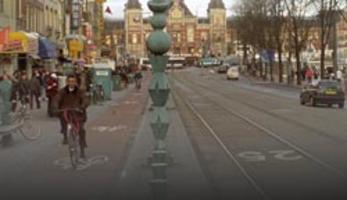Implementing new infrastructure for cycling
Summary
Creating safer and more convenient facilities for cyclists and pedestrians is a sustainable way of reducing car use and congestion.
Implementing sustainable mobility
Research carried out in connection with Preston’s TravelSmart project suggested that cycling had the greatest potential of any mode to replace car journeys. It is more flexible than public transport, offers comparable journey times to the car for short journeys, and enables people to go further than on foot.
However, the traffic management system in Preston city centre represented something of a barrier to bike use and Preston had a high accident rate for cyclists. Prior to measure implementation, cycle use in Preston was declining and was low by European standards.
The aim was therefore to increase cycle use in Preston by making conditions more attractive. Proposals included:
- the creation of a network of radial cycle routes and a cross-city route in the north of Preston to serve employment areas;
- the installation of bike parking facilities in a multi-storey car park in partnership with a shopping centre operator;
- the creation of bike parking facilities in the city centre and at the university;
- the implementation of a Cycle for Health campaign, including cycling on prescription to combat heart disease, diabetes and obesity; and
- using sport cycling to promote bike use, based on the university’s cycle race track and the city’s BMX track and drawing on the country’s Olympic cycling success.
Progress
The length of cycle routes in Preston increased by 30 percent, from 21 km in 2004 to 28.5 km at the start of 2009:
- improvements were made to the canal towpath, providing a new cycle route to the north west of Preston;
- a cycle path was extended along an old railway track to Preston’s north east employment area; and
- new cycle routes were created through riverside parks to the south of the city centre, and in outlying areas.
The Clear Zone and Adelphi projects resulted in improvements for cyclists:
- traffic calming and slower traffic speeds made roads safer for cyclists;
- cycle crossings were created at a major roundabout near the university; and
- contraflow cycle lanes in four streets gave cyclists the advantage over motorised traffic.
A new cycle map of the area was brought out in summer 2008 and new signs were installed on cycle routes. School travel plans helped to promote cycling among young children and junior cycle clubs were created.
The number of automatic cycle counters was increased from two to eight and a questionnaire survey was also carried out among users of the canal towpath cycle route in 2007. The Department for Transport’s national traffic survey monitored cycle volumes at 11 sites, and school and company travel plans also provided data on cycling levels in the area.
Outcomes
Initial results from the TravelSmart survey suggested a 35 percent increase in cycle trips in Preston.
At the two sites where automatic cycle counters were in place at the start of the project cycle, use increased by 8 percent. The Department for Transport’s road traffic surveys in the area suggested an increase in cycle use of 13 percent.
If measures carried out in the CIVITAS project had not been implemented, cycle use in the area is would probably have continued to decline. Even so, cycle use remains low by European standards and more could be achieved if the area had a better cycle network.
This fact sheet has been updated by a third party on the basis of available information (not by the city itself), therefore we do not guarantee any data with respect to their content, completeness or up-to-dateness.








